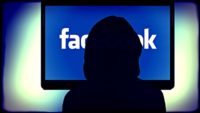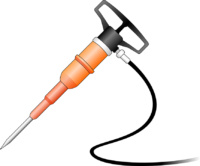 Facebook has recently unrolled Facebook Live, a feature that allows you to broadcast live video to your followers with a click of a button. There a lots of helpful tips for using this new feature from trusted sources like Social Media Examiner, Mashable, and even Facebook itself.
Facebook has recently unrolled Facebook Live, a feature that allows you to broadcast live video to your followers with a click of a button. There a lots of helpful tips for using this new feature from trusted sources like Social Media Examiner, Mashable, and even Facebook itself.
Here are some tips to help you incorporate Facebook Live into your radio station’s digital strategy…
1. Know the Goals of Your Digital Strategy and Understand Facebook Live’s Role

Facebook Live is a tool, not a strategy. Treat it accordingly: Define your digital goals, develop a strategy for achieving those goals, and then select the right tools to execute that strategy. This may or may not include Facebook Live. A jackhammer is a wonderful tool, but if my goal is to hang a picture up on my living room wall, it’s not the right one for the job. In other words, don’t fall into the trap of thinking, “Everybody else is using Facebook Live, so we have to, too.”
Here’s an example: Suppose your station has decided that a key goal of your digital strategy is to sell more tickets to your radio station’s summer concert, the Big Lawn Party. You’ve determined that the key metrics you need to monitor are:
- The number of tickets sold
- The number of visitors to your website (because that’s where people go to buy the tickers)
The key question you’ve got to ask is, “How can Facebook Live help my station sell more tickets?”
Maybe it can and maybe it can’t. In all likelihood, it’s not a matter of “if” but of “how much?” But the crucial thing is that we’re keeping our eye on the larger picture.
Having said that, it is wise to experiment with Facebook Live so that your station can gain a better understanding of the tool. You may discover a way in which it helps you achieve your goals that you didn’t foresee. So while you may not want to make Facebook Live the lynchpin of your big summer promotion, it may be useful to have your night jock dabble with it a few times.
2. Set Yourself Up to Measure
Before you begin an experiment, make sure that you’re set up to measure the results. “Gut feelings” are a great way to guess if a new song will be a hit, but it’s not a sound digital strategy. Make sure that everybody agrees on the what you’re measuring — in our case, concert tickets sold — and how you’re measuring it. You may need some tools for this second part. For example, you could create a dedicated landing page at wkrp.com/biglawnpartysecrets. You can promote that url exclusively in your Facebook Live videos and track anyone who buys tickets through that page. It might sound like this:
“Hey, this is DJ Bob on Facebook Live, where every day at noon I’m giving you the behind-the-scenes scoop on the bands playing this year’s Big Lawn Party. You can find an archive of all of our Facebook Live videos and buy tickets at wkrp-dot-com-slash-big-lawn-party-secrets.”
Now, if people buy tickets because they saw your station’s Facebook Live videos, you’ll know.
Call to Action
As you can see, this means that you’ll want your Facebook Live broadcasts to have a very clear call to action. Don’t broadcast without knowing what you want to encourage viewers to do.
3. Decide Which Facebook Profile or Page You’re Broadcasting From
Radio stations may have multiple pages that they could broadcast from. For example, will Lisa from the “Rick and Lisa Morning Show” on WKRP broadcast live from her personal profile, her DJ Lisa Facebook page, the “Rick and Lisa Show” page, or the WKRP page? As a general rule, use the station’s page to broadcast live so people don’t have to follow many different people to catch your broadcasts. The exception to this rule would be a syndicated show that appears on multiple stations.
4. Have a Well-Defined Focus
Don’t start broadcasting live just for the sake of broadcasting live. Have clear focus for your broadcasts. Here are some situations where radio stations may want to take advantage of Facebook Live:
- Backstage Interviews at Concerts
- Acoustic Performances
- Morning Show Stunts
- Station Events
Any time your broadcast may include a musical performance, clear any rights issues with your station’s attorneys in advance.
5. Promote Your Broadcast in Advance
Promote your broadcast as destination viewing. Use all of the promotional channels at your disposal, including:
- Social media
- Email blasts
- Live on-air reads
- Recorded production elements.
For example, “All day Saturday, we’ll be broadcasting live from backstage at the Warped Tour. Follow us on Facebook to watch live interviews with the artists.”
6. Understand the Difference Between Live Video and Archived Video
There’s a difference between how people consume and interact with live video and archived video. Think about how you consume breaking CNN coverage of a national disaster and how that differs from the way you watch the latest episode of Empire. You may put CNN on in the background for 6 hours while you do other things, but you set aside an hour to watch Empire with a glass of wine. This types of differences will play a role when you produce video.
Live Video
With Facebook Live, you will produce a video that can both be consumed live and as an archive. Because it’s live, you want to make your broadcasts longer than if it were just archived; this gives people time to tune in. Live video also gives you the opportunity to interact with viewers. For example, if you are interviewing a band that’s playing at Big Lawn Day, you may want to encourage people to submit questions that you can ask them on the spot.
Archived Video
But unlike your radio show, don’t assume that once the broadcast ends, your work is done. In fact, your video may get more views after the initial broadcast. Optimize your video after the fact by adding or editing the thumbnail image, the description, the date, and the time. Add a question that encourages further comments, and add a clear call to action (“If you want to see more Facebook Live videos, go to wkrp.com/biglawndaysecrets.”) You may want to embed this video on your radio station’s website and promote it on your other social media accounts.
7. Carve Out Time to Review and Discuss the Results with Your Staff
Gather the appropriate staff members and review the results of your Facebook Live broadcasts together. Set aside a specific time to do this — ideally in your weekly Web Meeting; don’t relegate this to a passing hallway conversation. People may look at the same stats and draw different conclusions, so its important to discuss them as a group.
Facebook offers metrics for Live videos, but make sure you’re coupling these from other important sources, like Google Analytics. In our example, we not only want to see how many people watched our Facebook Live broadcast, but how many people went to the landing page at wkrp.com/biglawnpartysecrets, and — most importantly — how many of those people bought tickets to the concert.
You may not find clear-cut answers. Remember, this is a new technology and you’re experimenting. “This had a minor effect” or “We need to do some more experimenting to see what works best” are perfectly reasonable conclusions.
More Digital Tips
- What is Google Analytics Telling You About the Impact of COVID-19 on Your Radio Station’s Website?
- Rethinking Radio Station Swag in Light of Social Identity
- Here’s What Your Radio Station Should Put in Its Website Sidebars
- Why You Should Fill Your Website With Text, Not Your Emails
- Use Pinterest and Holiday Recipes to Drive Traffic to Your Radio Station’s Website
- A Simple Digital Treat to Thank Your Radio Listeners This Thanksgiving - November 13, 2023
- Interview Questions When Hiring Your Radio Station’s Next Digital Marketing Manager - November 6, 2023
- A Radio Conversation with ChatGPT: Part 2 – Promotions - October 30, 2023





Dear Sir/Madame, can you help/ or advise me of how to go about having my weekly radio show live on Facebook?The station studio does not have any camera only a large mixer, however, if your advice that I may have to get one ,I will. I used a Lenovo laptop with virtual dj as my music information.
Sincerely,
Raynau Holassie.
Ranyau,
Facebook Live is designed for video from a mobile phone, not audio from an input. However, Facebook introduced Facebook Live Audio late last year (https://media.fb.com/2016/12/20/introducing-live-audio/). So far, it is only available to selected partners, but they will probably eventually open it up to everybody. When they do, I recommend checking with an attorney — it’s not clear how music royalties are covered in this situation.
Excellent post Seth! We are currently serving more than 10,000+ radio stations. If anyone were to host a radio station that isn’t listed on our site, shoot us a message and we will add your radio station for free!
How can I have a live radio station on Facebook?
This is exactly what I was looking for. Thanks for sharing this great article for facebook live!
In my perspective, a radio station consulting service would definitely help me and my staff know the goal of our digital strategy to keep our station alive. I appreciate that you said that we should set ourselves up to measure so I’ll be sure to do that while we plan for ideas with the consulting company we’ll hire. This way, we’ll also know which Facebook page we’re broadcasting from so that we can have a pick of popular options we can get based on their ideas.
Hello,
If a radio station, in theory, has the rights to broadcast over the air, do those same rights apply on a Facebook live stream? For example, I do a live stream where I only talk to the listeners but sometimes as I’m doing a break some music (a few seconds) may be broadcast on the live. Is that ok?